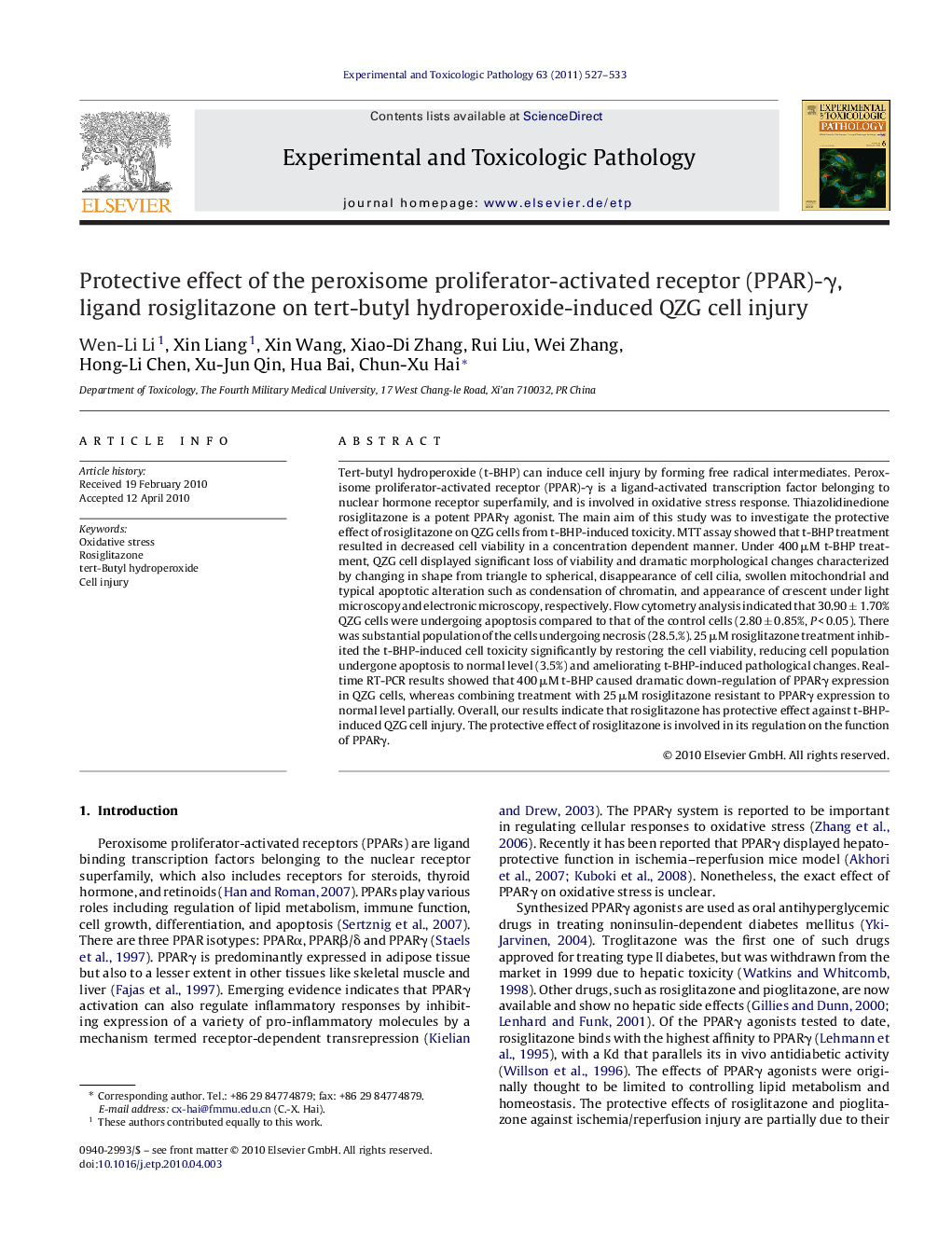| کد مقاله | کد نشریه | سال انتشار | مقاله انگلیسی | نسخه تمام متن |
|---|---|---|---|---|
| 2499026 | 1116488 | 2011 | 7 صفحه PDF | دانلود رایگان |

Tert-butyl hydroperoxide (t-BHP) can induce cell injury by forming free radical intermediates. Peroxisome proliferator-activated receptor (PPAR)-γ is a ligand-activated transcription factor belonging to nuclear hormone receptor superfamily, and is involved in oxidative stress response. Thiazolidinedione rosiglitazone is a potent PPARγ agonist. The main aim of this study was to investigate the protective effect of rosiglitazone on QZG cells from t-BHP-induced toxicity. MTT assay showed that t-BHP treatment resulted in decreased cell viability in a concentration dependent manner. Under 400 μM t-BHP treatment, QZG cell displayed significant loss of viability and dramatic morphological changes characterized by changing in shape from triangle to spherical, disappearance of cell cilia, swollen mitochondrial and typical apoptotic alteration such as condensation of chromatin, and appearance of crescent under light microscopy and electronic microscopy, respectively. Flow cytometry analysis indicated that 30.90 ± 1.70% QZG cells were undergoing apoptosis compared to that of the control cells (2.80 ± 0.85%, P < 0.05). There was substantial population of the cells undergoing necrosis (28.5.%). 25 μM rosiglitazone treatment inhibited the t-BHP-induced cell toxicity significantly by restoring the cell viability, reducing cell population undergone apoptosis to normal level (3.5%) and ameliorating t-BHP-induced pathological changes. Real-time RT-PCR results showed that 400 μM t-BHP caused dramatic down-regulation of PPARγ expression in QZG cells, whereas combining treatment with 25 μM rosiglitazone resistant to PPARγ expression to normal level partially. Overall, our results indicate that rosiglitazone has protective effect against t-BHP-induced QZG cell injury. The protective effect of rosiglitazone is involved in its regulation on the function of PPARγ.
Journal: Experimental and Toxicologic Pathology - Volume 63, Issue 6, September 2011, Pages 527–533